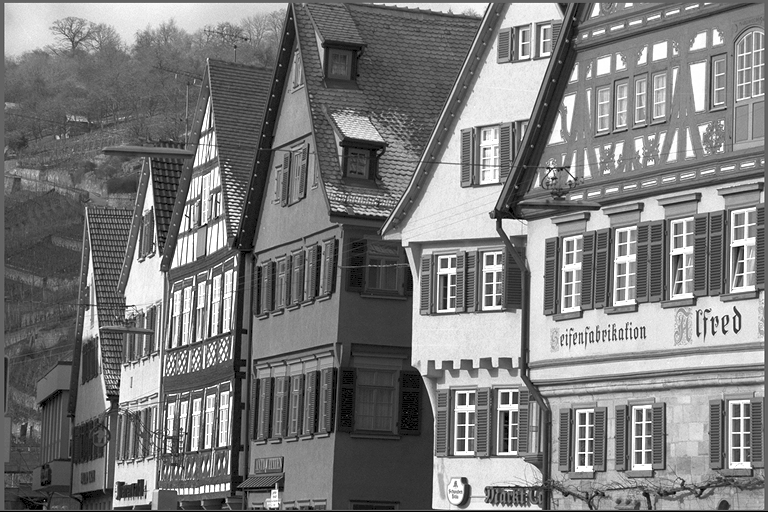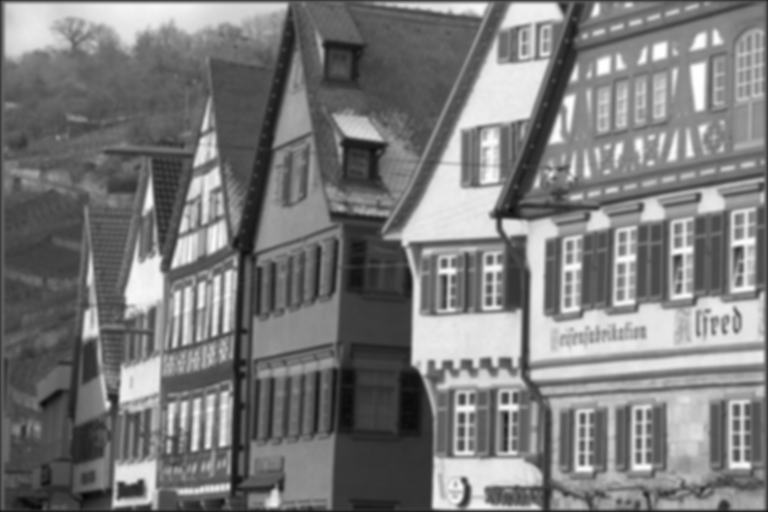Overview
Gaussian image filter is a low-pass discrete Gaussian filter that smooths out the image by doing a Gaussian-weighted averaging of neighbor pixels of a given input pixel. It produces images with less artifacts than Box Image Filter, but could potentially be more costly to compute.
It supports two modes of operation:
- Kernel support size is automatically calculated based on the filter standard deviation (sigma).
- Use both user-provided kernel support size and filter standard deviation.
| Input | Gaussian kernel | Output |
|---|---|---|
 | 7x7 support, \[ \sigma=1.7 \] |  |
Implementation
Gaussian filter is implemented as a convolution operation on the input image where the kernel has the following weights:
\[ w_g[x,y] = \frac{1}{2\pi\sigma^2} \cdot e^{-\frac{x^2+y^2}{2\sigma^2}} \]
When the input kernel support size is 0 for a given dimension (or both), it is calculated from the given standard deviation by assuming that the weights outside \(\pm3\sigma\) window are zero.
In this case, the following formula is used:
\[ w = \max\{3,2 \times \lceil 3\sigma\rceil-1\} \]
- Note
- We clamp the minimum kernel size to 3 because a kernel with size 1 doesn't have enough samples to properly characterize a Gaussian function.
Usage
- Initialization phase
- Include the header that defines the Gaussian filter function. #include <vpi/algo/GaussianImageFilter.h>
- Define the stream on which the algorithm will be executed, the input and output images.
- Create the output image. uint32_t w,h;vpiImageGetSize(input, &w, &h);VPIImageType type;vpiImageGetType(input, &type);VPIImage output;vpiImageCreate(w, h, type, 0, &output);
- Include the header that defines the Gaussian filter function.
- Processing phase
- Submit the algorithm to the stream, input, output images, window size and boundary condition. vpiSubmitGaussianImageFilter(stream, input, output, 7, 7, 1.7, 1.7, VPI_BOUNDARY_COND_ZERO);
- Optionally, wait until the processing is done. vpiStreamSync(stream);
- Submit the algorithm to the stream, input, output images, window size and boundary condition.
Limitations and Constraints
Gaussian filter is currently implemented using separable image convolver if it satisfies \(max(m,n) \geq 7\), and the input characteristics (size and/or type) satisfies its constraints.
If \(max(m,n) < 7\), it'll use image convolver if input characteristics satisfies its constraints, or else the operation will fail.
- Note
- Currently image convolver has some limitations on its PVA backend that makes some Gaussian filter operations fail. This is the case when the resulting convolution kernel has more than 49 weights on image types VPI_IMAGE_TYPE_Y8 and VPI_IMAGE_TYPE_Y8I.